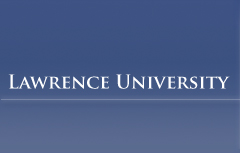Document Type
Honors Project
Publication Date
6-1-2012
Abstract
The detection limit for fluorescence imaging has been improved by more than two orders of magnitude by a modulation technique that minimizes the influence of noise. Since most noise sources have a 1/f dependence, higher modulation frequencies result in less noise in the detected signal. Typical cameras used for imaging have frame rates of 50 or 100 hertz which is too low for substantial noise reduction. However, new time-of-flight cameras developed for the gaming industry have modulation frequencies of up to 20 MHz, allowing for a substantial reduction in noise in the detected signal. In this study, the improved detection limit of this camera is quantified and used to image mouse tumors labeled with fluorescent dye. The results of the calibration show that the detection limit is increased by a factor of more than 400 when compared to the non-modulated signal from the camera.
Level of Honors
cum laude
Department
Physics
Advisor
Jeffrey A. Collett
Recommended Citation
Van Hoozen, Brian L. Jr., "Sensitive Fluorescence Detection using a Camera from the Gaming Industry" (2012). Lawrence University Honors Projects. 25.
https://lux.lawrence.edu/luhp/25
